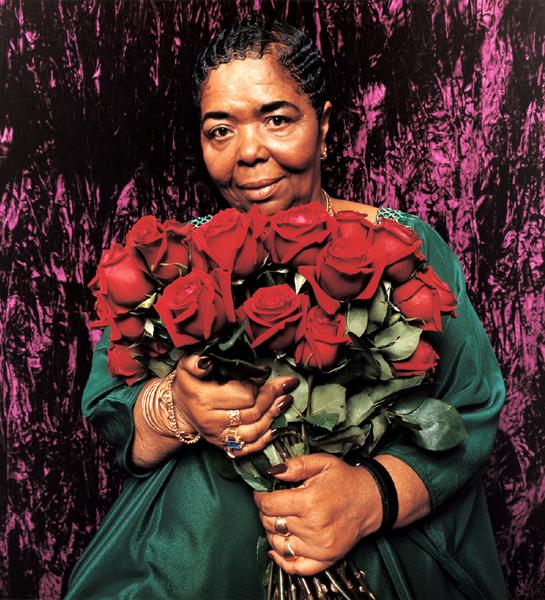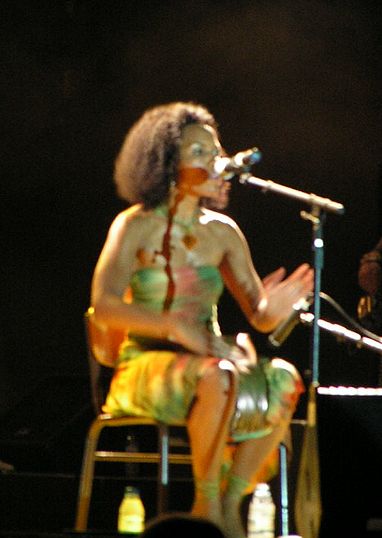Cape Verde: Cape Verde Art / Culture Profile 2012
2012/02/28
Cape Verde Art / Culture Profile 2012
The Culture of Cape Verde features literatures including Claridade, Negrume and others and writers including Sergio Frusoni, Manuel Lopes, Ovídio Martins and more. The culture also has music proprieties including morna, funaná, coladera, tabanka and more. Cesária Évora, Tcheka and other Capeverdean singers throughout the world.
Cape Verdean literature
Cape Verdean literature is one of the richest of Lusitanian Africa.
- Poets: Frusoni Sergio (linked site is in Portuguese), Tavares Eugénio (linked site is in Portuguese), B.Léza, João Cleofas Martins, Luís Romano de Madeira Melo, Ovídio Martins, Barbosa Jorge, Fortes Corsino António, Baltasar Lopes (Osvaldo Alcântara), João Vário, Oswaldo Osório, Arménio Vieira, Vadinho Velhinho, José Luís Tavares, Carlos Baptista, etc.
- Authors: Manuel Lopes, Henrique Teixeira de Sousa, Almeida Germano, Luís Romano de Madeira Melo, Germano de Almeida, Orlanda Amarílis, Jorge Vera Cruz Barbosa, Pedro Cardoso, Mário José Domingues, Daniel Filipe, Mário Alberto Fonseca de Almeida, Corsino António Fortes, Arnaldo Carlos de Vasconcelos França, António Aurélio Gonçalves, Aguinaldo Brito Fonseca, Ovídio de Sousa Martins, Osvaldo Osório, Dulce Almada Duarte, Manuel Veiga
Music
 Cesária Évora is perhaps the best internationally-known practitioner of morna. She has achieved worldwide fame.
Cesária Évora is perhaps the best internationally-known practitioner of morna. She has achieved worldwide fame.
Cape Verde is known internationally for morna, a form of folk music usually sung in the Cape Verdean Creole, accompanied by clarinet, violin, guitar and cavaquinho. The islands also boast funaná and batuque music.
Cape Verde is an island archipelago that was uninhabited until the Portuguese arrived in 1462. The sailors brought with them African slaves, and the islands' population became mixed with elements of both races. Climate conditions made the islands inhospitable, and the Portuguese mostly ignored the inhabitants and the frequent droughts and famines that wracked the islands periodically. As a result, there are now more Cape Verdeans abroad than at home, and sizable communities exist in New England, Portugal, Wales, Senegal, Italy, France and the Netherlands.
Morna is by the most popular genre of Cape Verdean music, and it has produced an international superstar in Cesária Évora. Morna is a national song-style, like Argentinean tango, beloved by Cape Verdeans across the many islands of the country. It is related to Portuguese fado and its close cousin, Brazilian modinha. Lyrics are usually in Creole, and reflect highly-variable themes, including love and lust, patriotism and mourning.
Morna is believed to have originated on Boa Vista as a cheerful song-type. Eugénio Tavares was an influential songwriter of the period, and his songs are still extensively performed. Morna also spread to São Vicente, and composers like B. Leza and Manuel de Novas became popular. Solo vocalists are accompanied by a guitar, violin, bass guitar) and a piano. The cavaquinho (similar to a ukulele), a Portuguese instrument, is also common.
Aside from Évora, popular morna musicians include Ildo Lobo, Titinha, Celina Pereira, Bana, Djosinha, B. Leza, Travadinha, Sãozinha and Maria Alice.
Funaná is an accordion-based genre from Santiago. Prior to independence, funaná was denigrated by  colonial authorities, who considered it African. Since independence, however, bands like Bulimundo adapted the music for pop audiences and Finaçon, who combined funaná and coladeira into a fusion called funacola.
colonial authorities, who considered it African. Since independence, however, bands like Bulimundo adapted the music for pop audiences and Finaçon, who combined funaná and coladeira into a fusion called funacola.
In the 1930s, Morna evolved in a swifter form of music called coladeira. It is a more light-hearted and humorous genre, with sensual rhythms. Performers include Manuel de Novas, Frank Cavaquim, Djosa Marques and Os Tubarões.
Batuque is also popular in Cape Verde. Originally a woman's folk music, batuque is an improvised music with strong satirical or critical lyrics. In the 80's, Orlando Pantera has created the "new batuco" (neo-batuku), but he died in 2001 before to achieve his creative work. Performers and songwriters are Pantera, Vadú, Tcheka, Mayra Andrade, Lura, Zeca di nha Reinalda.
There are many Cape Verdeans living abroad, especially in the United States, where they are concentrated in California, Hawaii and throughout New England, especially Rhode Island and Boston. Many came on whaling ships in the 19th century. Their music included string bands like The B-29s, Notias, Augusto Abrio and the Cape Verdean Serenaders. There were also Cape Verdean big bands, including the Creole Vagabonds and the Don Verdi Orchestra. More modern musicians include zouk singer and Kora Award winner Suzanna Lubrano, Frank de Pina, Mendes Brothers (and their influential record label, MB Records), Saozinha, Creole Sextet and Rui Pina.
- Cape Verde News
-
- CHINA: Macau businessman wants to take companies from China to Cabo Verde
- BOTSWANA: Routes Africa forum aims to improve African air connectivity
- BOTSWANA: Economic integration is helping boost trade and investment in Africa
- BOTSWANA: Africa’s economic growth is likely to be slower in the intervening years
- BOTSWANA: Beyond Commodities: How African Multinationals Are Transforming
- CAPE VERDE: Standard & Poor’s said Cabo Verde’s reputation as one of the most stable countries in Africa
- Trending Articles
-
- KENYA: Kenya's tea industry moves toward strategic diversification
- CHINA: Forty-six Chinese-owned companies registered in Guinea-Bissau
- GHANA: Ghana steps up to secure electricity supply
- TUNISIA: Tunisia augments ICT exports and connectivity
- INDIA: Indian central bank chief to step down in surprise move
- NIGERIA: Nigeria’s e-commerce industry shows growth potential













